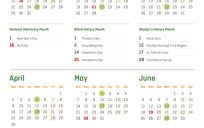As part of the EPP training experience in Kansas City, the benchmarking team that I was a part of was assigned to visit Planet Reuse, a small company located about a mile from the EPP venue. Today was a dreary, cold, and rainy day, so we were very happy that it was so close to our hotel! We arrived a few minutes early and met with Tim Bensman, one of the two full-time employees of the company (he’s Operations Manager). From the background material provided to us by EPP, we gathered that Planet Reuse is a company involved in the procurement of used building materials, which they then re-use in new building projects
Tim showed us around their office space, which they share with several other small start-up companies in a large open space. This space is owned by yet another small company called OfficePort. Tim introduced us to Shaul Jolles, the OfficePort owner. He explained that Planet Reuse was their first tenant, and that they also have a similar office space in Chicago, where Planet Reuse has begun to do more business. An interesting aspect of their office space was that they used the proximity to other companies to trade services of various kinds instead of paying for them (everything from IT services to coffee on-site).
Tim then showed us samples of the reclaimed building materials their company deals with. Some of the stories of the origins of these materials were quite fascinating – for example, there was wood that came from the original flooring of Kansas City’s Union Station that they turned into coffee tables. It quickly became clear from the way Tim talked about the stories behind the materials that he was passionate about the company’s business model and the ‘historical preservation’ that it generated along the way.
We then spent about two hours in a presentation given by both Tim and Nathan Benjamin, the founder and other employee of the company. Nathan was in Detroit for another meeting and was virtually present via the magic of Skype and video-conferencing. Tim and Nathan clarified that they focus on supplying reusable material only for commercial construction projects. They emphasized that of the 85 billion tons of landfill waste produced in the US each year, about 40 % (or 35 billion tons!) is construction generated, and that they are excited about the potential their company has to reduce that waste stream and thus protect the planet.
Tim and Nathan explained how the company got started, what its current business model is, and went over quite thoroughly what challenges (or ‘roadblocks’ as they put it) they face and what they are doing to resolve this. Major points we derived from this part of the presentation were as follows:
– The company is very young: only about two years old.
– They started out as a Kansas City –only, ‘e-commerce’ kind of service where users found and matched one another to projects and building materials, but have since evolved into a consulting and materials brokering company that is national in scope. They have been making a profit since June 2008.
– The general business niche they saw themselves filling (aside from the pollution-reducing aspect), was the ability to give construction companies across the country access to reclaimed supplies and save them time by certifying the quality and sustainability ‘pedigree’ of these supplies. Certification of supplies as re-used and locally sourced material is desirable if a company wants their building to carry a ‘sustainably designed’ logo (e.g., LEED certification).
– A major challenge they face is a lack of awareness of the value of using reclaimed materials among both demolition (or ‘demo’) companies and construction and architecture firms. They have addressed this issue by actively educating potential clients through ‘lunch-and-learn’ events at architecture firms, attending professional conferences of construction companies. They understood quickly that building relationships with ‘demo’ companies as well as ‘design and build’ companies.
– Another major challenge for them is building the company and souring materials on a national scale with a small group. They deal with this by judicious use of consultants (for things like construction design, IT support, etc.), some of which is obtained through bartering with nearby businesses.
– Other major challenges that they highlighted included the fear that some design firms have of the perceived costs of using reclaimed materials and the tight schedule ‘demo’ companies often have. They lower costs by sourcing reusable materials as close to a construction site as possible, and make sure to communicate frequently and clearly with demo companies to understand project schedules.
– Overall, it seemed to us that there were three general aspects of the ‘best practices’ of this company: (1) their ability to educate their customer/materials source population about themselves, (2) their ability to be flexible in their work roles, and (3) their ability to communicate with clients and materials source frequently and effectively, to manage multiple projects simultaneously while also finding new customers.
Throughout our time with them, Tim and Nathan were very gracious hosts who answered all of our numerous questions. After the presentation, Tim accompanied us for lunch to Johnny’ Tavern, a restaurant in the newly renovated Kansas City Power and Light District. He chose the place for us, not just for the good food but for the fact that it is one of Planet Reuse’s success stories: their tables are also constructed out of wood reclaimed from Union Station! Tim has even offered to meet with us later today to help us practice our class presentation on this experience, which was an unexpected and very generous gesture.




Leave a Reply
You must be logged in to post a comment.